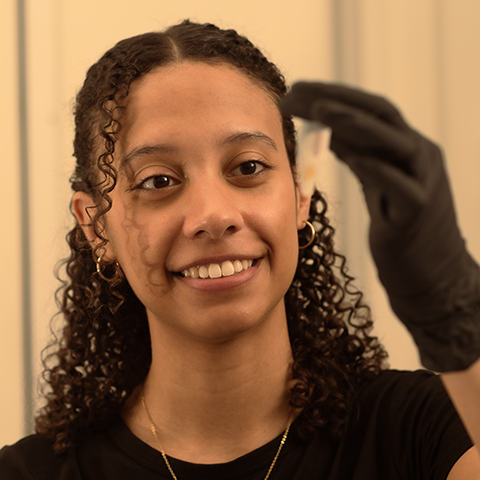A violinist and former synchronized swimmer, Jasmine Stone has spent a lot of time considering not only how we learn to move, but how our movements inform our learning. As a graduate student in the Litwin-Kumar lab, she’s exploring the role of the brain chemical dopamine in this feedback loop. Using mathematics to model brain activity, Stone investigates neurons that allow fruit flies to learn as they move through the world. Her expertise in computational modeling also opens doors to collaborating on other projects, such as testing how learning is affected by the order of a series of experiences. Outside the lab, she mentors students pursuing careers in science.
Photos by Thomas Barlow
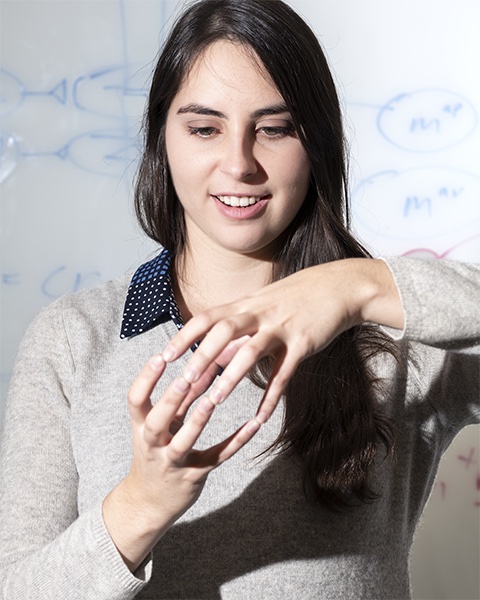
Stone explains how brain networks are connected.
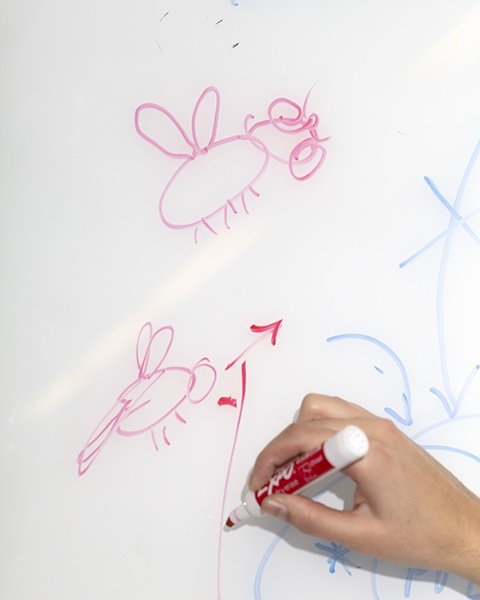
Stone sketches a fruit fly, an animal she studies.
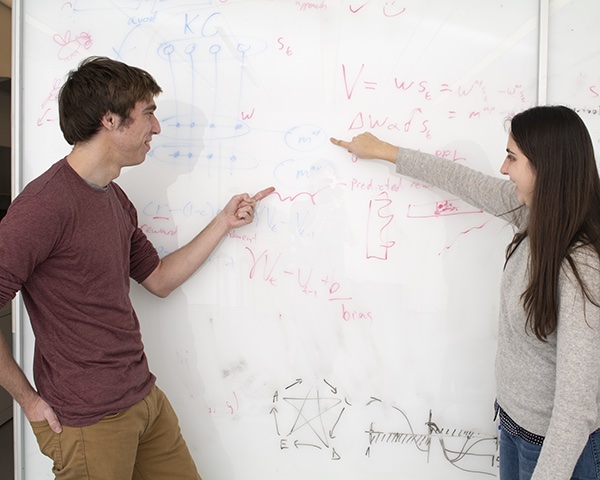
Stone discusses theoretical models of the fruit fly brain with fellow graduate student Jack Lindsey.
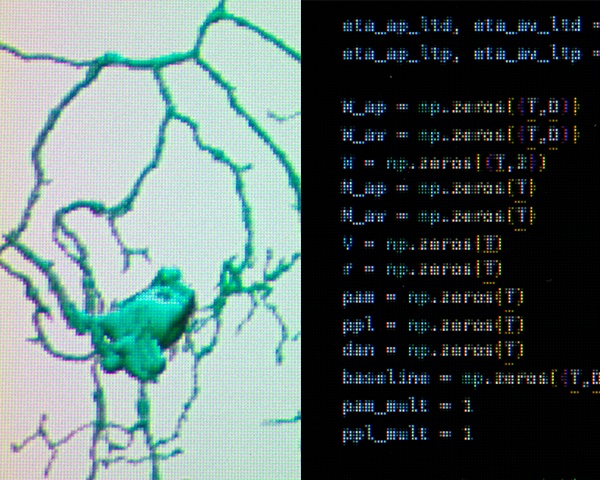
Neurons visualized in a fly’s brain (left) are being modeled by computer code (right).
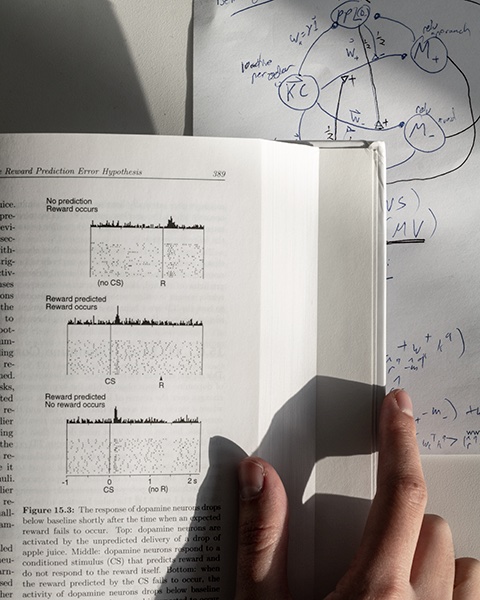
Stone compares her models (upper right) with experimental data, like that shown in this book.
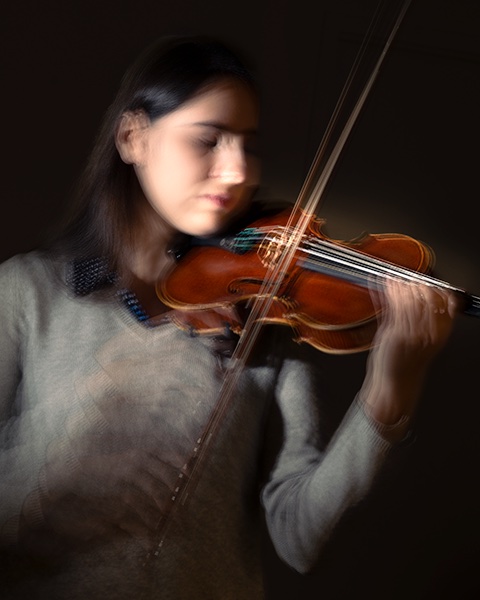
The brain’s ability to learn complex movements informs both Stone’s research and her violin playing.

